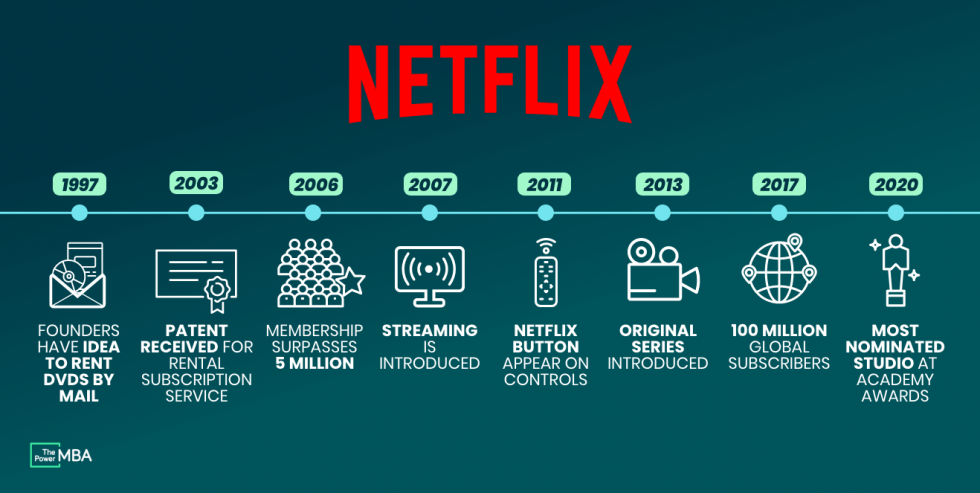Scaling the Edge: Transformation in the Age of Disruption

One of the hot topics at SXSW was how businesses can stay ahead of the curve in today's fast-paced, ever-changing landscape. I've distilled some key insights from three great talks that tackled this issue from different angles: business transformation, future leadership, and Amazon's approach to AI and transformation. The most compelling idea for me was the difference between "digital transformation" and true business transformation. Digital transformation is all about improving efficiency – essentially "making the caterpillar walk faster." But real business transformation is about completely reimagining and restructuring the organization at its core – turning that caterpillar into a beautiful butterfly.
In today's rapidly evolving business landscape, organisations must embrace change and adapt to new challenges to remain competitive. The traditional approach of focusing on incremental improvements and efficiency is no longer sufficient. Instead, companies need to embark on a journey of business transformation, much like a caterpillar metamorphosing into a butterfly. This transformation is not about using technology to make the caterpillar walk faster; it's about creating a fundamentally different organism that can soar to new heights.
To achieve this transformation, organisations must adopt a "Zoom Out, Zoom In" strategy. This approach involves taking a step back to envision the big opportunity that lies ahead, 10 years from now, and then zooming in to identify two key initiatives that can be implemented in the next 6-12 months to progress towards that bigger opportunity. By focusing on viewable trends rather than a detailed view, companies can prioritise business transformation over mere digital enhancements.
In the past, success was often achieved through scalable efficiency – doing things better, faster, and cheaper. However, in today's world, scalable learning has become the key to success. This doesn't mean simply training individuals within the organisation; it means fostering a culture of continuous learning and adaptation at the organisational level. The work itself is changing, and strategies need to focus on emotions and psychological levels to drive real transformation.
Emotional transformation is a critical component of this process. Organisations must move beyond fear and embrace a mindset of curiosity and exploration. Instead of trying to figure out all the answers upfront, they need to focus on asking the right questions and being open to new possibilities. A top-down, big bang approach rarely works; instead, companies should "scale the edge" by leveraging small, agile teams to drive rapid growth and transformation.
Scaling the edge involves energising and motivating a dedicated team to lead an initiative that focuses on rapid growth and transformation. This approach emphasises starting with modest funding, achieving cash flow breakeven quickly, and accelerating growth to generate increasing returns. By avoiding massive investments and long timelines typical of traditional transformations, scaling the edge reduces the risk of resistance from the existing core of the institution and leverages network effects for rapid scaling.
To successfully scale the edge, organisations must identify early milestones, generate impact, and spread enthusiasm throughout the organisation. This helps overcome fear and scepticism, driving transformation through passion and commitment. By instilling hope and excitement rather than fear, participants are more likely to embrace change and pursue new opportunities beyond the core business.
Leaders who effectively use the Zoom Out, Zoom In strategy demonstrate the ability to balance between focusing on the big picture and diving into details. They can switch perspectives to gain a comprehensive understanding of situations, enabling them to make informed decisions and drive strategic actions. When zooming in, these leaders look for immediate benefits, make ad hoc decisions, and address details promptly. However, they may overlook underlying causes or long-term solutions.

On the other hand, when zooming out, effective leaders see patterns rather than individual incidents. They recognise emerging threats and opportunities and consider the big picture and potential future scenarios before acting. By balancing these perspectives, leaders can identify problems, patterns, opportunities, and causes, leading to the development of comprehensive strategies that prevent recurring issues and drive overall organisational success.
To apply the Zoom Out, Zoom In strategy in practice, organisations should start by aligning long-term future trends (10-20 years) with short-term initiatives (6-12 months) to create a strategic roadmap. This requires focusing on evolving customer needs and external trends rather than internal changes to envision future opportunities. Once aligned with the long-term view, companies should identify a limited number of near-term initiatives that can lead to that envisioned future, which requires a high level of focus and communication within the organisation.
When evaluating short-term initiatives, organisations should consider three key steps. First, they should scale the part of the company that can drive the transition towards becoming a zoom-out business. Second, they should identify one near-term initiative that can strengthen the existing core. Finally, they should determine marginally performing activities to discontinue in the next 6-12 months to free up resources.
Regular reflection sessions are essential to refine strategies and ensure alignment between long-term vision and short-term actions. This approach helps companies break away from traditional planning methods and fosters adaptability and innovation in a fast-paced business environment.
It's important to note that digital transformation is not just about technology; it's about fundamentally changing the way organisations operate and create value. As Clayton Christensen, the renowned author of "The Innovator's Dilemma," states, "Disruptive innovations are not breakthrough technologies that make good products better; rather they are innovations that make products and services more accessible and affordable, thereby making them available to a larger population".
In today's world, disruptive innovations are happening at an unprecedented pace, and organisations that fail to adapt risk being left behind. According to a study by McKinsey & Company, "The average lifespan of companies listed in Standard & Poor's 500 was 61 years in 1958. Today, it is less than 18 years". This stark statistic underscores the need for organisations to embrace change and continuously reinvent themselves.
However, change is never easy, and resistance is a natural part of the process. As John Kotter, the author of "Leading Change," notes, "The central issue is never strategy, structure, culture, or systems. The core of the matter is always about changing the behaviour of people". To overcome resistance and drive successful transformation, leaders must focus on engaging and empowering their teams, fostering a sense of ownership and purpose, and creating a culture that embraces learning and experimentation.
One company that has successfully embraced the principles of scaling the edge and digital transformation is Amazon. Under the leadership of Jeff Bezos, Amazon has consistently disrupted industries and expanded into new markets, from e-commerce to cloud computing to artificial intelligence. Bezos has famously said, "If you double the number of experiments you do per year, you're going to double your inventiveness". This philosophy of constant experimentation and willingness to fail has been a key driver of Amazon's success.
Another example is Netflix, which transformed itself from a DVD rental company to a streaming giant and content producer. By continuously adapting to changing consumer preferences and leveraging data and technology to personalise the user experience, Netflix has become a dominant force in the entertainment industry. As Reed Hastings, the co-founder and CEO of Netflix, states, "Companies rarely die from moving too fast, and they frequently die from moving too slowly".

In conclusion, digital transformation is not just a buzzword; it's an imperative for organisations that want to survive and thrive in the age of disruption. By adopting a Zoom Out, Zoom In strategy, scaling the edge, and fostering a culture of learning and experimentation, companies can navigate the challenges of today and seize the opportunities of tomorrow. As the Greek philosopher Heraclitus once said, "Change is the only constant in life." Organisations that embrace this truth and adapt accordingly will be the ones that emerge as leaders in the digital age.
Ten things to drive business transformation:
1. Develop a clear vision and strategy for the future.
2. Identify and prioritise key initiatives that align with the long-term vision.
3. Foster a culture of continuous learning and experimentation.
4. Embrace emotional transformation and move beyond fear.
5. Scale the edge by leveraging small, agile teams to drive rapid growth and transformation.
6. Focus on evolving customer needs and external trends rather than internal changes.
7. Regularly reflect and refine strategies to ensure alignment between long-term vision and short-term actions.
8. Engage and empower teams, fostering a sense of ownership and purpose.
9. Embrace disruptive innovations and be willing to fundamentally change the way the organisation operates and creates value.
10. Lead by example, demonstrating the ability to zoom out and zoom in, and inspire others to embrace change.


